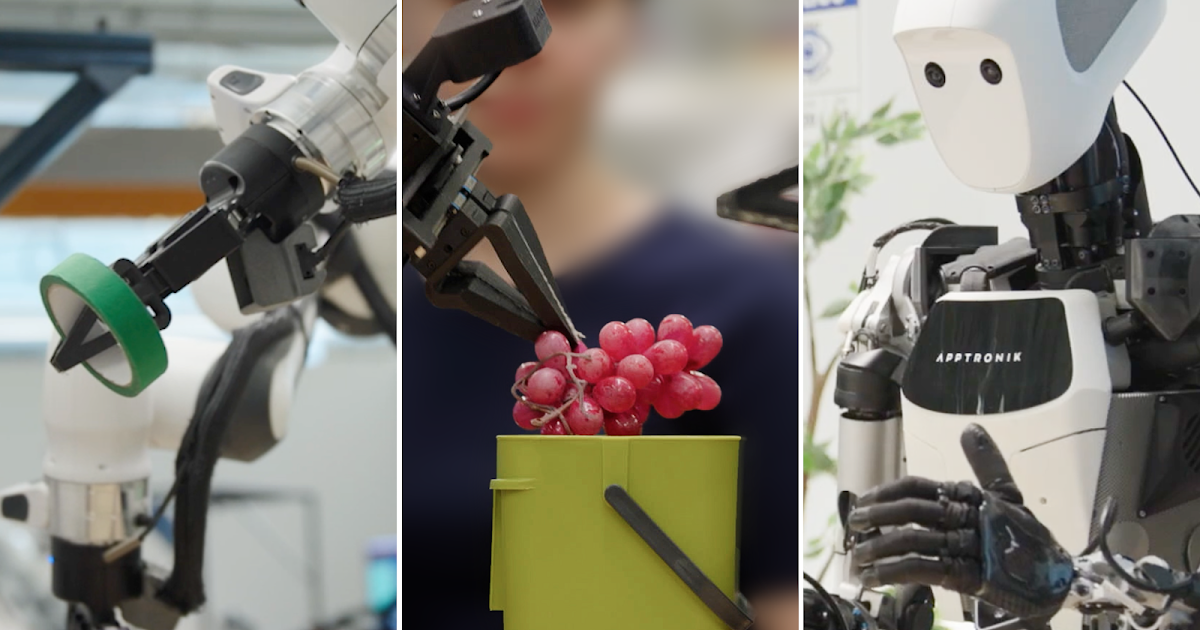Inside Google’s Gemini Robotics 1.5 and ER 1.5 Shaping a New Era of Intelligent Automation

Google’s Gemini Robotics 1.5 and ER 1.5: The Next Leap in Intelligent Automation
Reimagining Robotic Intelligence with Generative Systems
A significant stride was made in robotics with the introduction of two innovative models: Gemini Robotics 1.5 and its enhanced counterpart, ER 1.5. Unlike classic automation, these systems harness advanced generative technologies to empower robots with unprecedented levels of adaptability and contextual understanding.
A primary focus lies in enabling machines to rapidly assess novel scenarios and orchestrate actions with minimal human intervention. These models are engineered to overcome extensive initialization barriers and static programming protocols that have historically defined automated machinery. As a result, machines are being equipped to understand complex instructions, react in real time, and eventually streamline operations across a spectrum of physical environments.
The ultimate goal is clear: to allow machines to interpret their surroundings with a nuanced sense of autonomy, reasoning through challenges and executing tasks with a precision traditionally reserved for human cognition. This technological leap positions these models as a benchmark for building responsive, adaptable, and task-oriented robotics for future industrial and domestic roles.
Multi-Modal Understanding and Stepwise Task Planning
What truly sets these next-gen models apart is their embodied reasoning capacity, which blends vision and language comprehension. By interpreting both visual cues and textual commands, robots gain the capability to segment intricate objectives into manageable steps, resulting in fluid, human-like task execution.
This multilayered approach is not limited to basic object recognition or manipulative skills. Instead, it powers agents to devise contextual roadmaps—balancing prioritization, sequencing, and error correction mid-process. Examples showcased by the organization feature automated systems handling domestic sorting with finesse, from arranging miscellaneous household items to organizing recycling streams in a methodical, error-resistant fashion.
Through this integration of linguistic and perceptual data, these platforms serve as real-world proof that flexible, goal-driven automation can operate organically alongside human routines. The systems seamlessly convert abstract instructions into decisive mechanical actions, diminishing reliance on pre-defined routines and fixed coding frameworks.
Real-World Demonstrations and Limitations
Promotional material provides a glimpse into the real-world translation of these breakthroughs. In one instance, an advanced unit demonstrates how it methodically packs everyday products, adjusting its approach based on packaging type, spatial constraints, and task changes. Another scenario highlights the ability to separate recyclable material, distinguishing objects, and grouping them correctly with reliable consistency.
Despite these promising advances, practical deployment in industry or day-to-day environments is still circumscribed. Further validation, safety assurances, and environment-specific adaptations are necessary before broader adoption. Although the intelligence displayed is a pivotal advancement, integration into large-scale production or service frameworks remains an ongoing journey.
Nevertheless, the stepwise progress outlined by these models signals a paradigm shift, ushering a new frontier where advanced reasoning and multi-step planning are no longer relegated to theoretical research, but are actively shaping the potential of intelligent automation in physical space.
Key Features and Strategic Implications
Distinctive abilities include rapid learning from demonstrations, sophisticated environmental perception, and the flexibility to handle multi-faceted challenges. For end users, this means simplified programming, enhanced operational safety, and an overall reduction in time and resources spent on manual intervention.
From a strategic perspective, businesses and developers gain access to solutions that lower barriers for entry into smart automation, while researchers can build on a foundation designed for adaptability and situational awareness. These developments are also likely to accelerate the emergence of collaborative robotics, where machines and humans share overlapping responsibilities in increasingly complex environments.
Conclusion: A Defining Moment for Intelligent Machines
The launch of these models marks a pivotal chapter in the convergence of artificial intelligence and robotics. By facilitating embodied decision-making, flexible adaptation to changing contexts, and seamless conversion of natural language instructions into efficient actions, these models redefine what is achievable in intelligent automation.
As development progresses and practical applications expand, the blend of vision, language, and reasoning in machine agents stands poised to transform practices across technology, manufacturing, logistics, and beyond. This forward-looking approach outlines a future driven not just by automation but by genuine intelligent assistance integrated into the fabric of everyday life.
